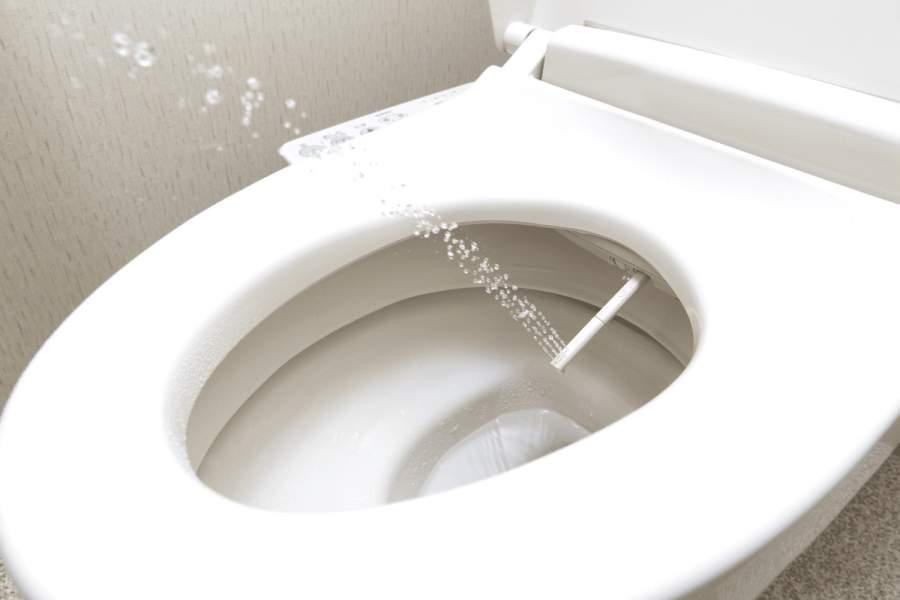If you’ve recently gone down the bidet rabbit hole, you may be wondering what the best type of bidet is for you.
In this article I cover the key differences between bidet attachments and bidet seats, including:
- Ease of installation
- Differences in features
- How the sprays can differ (significantly) between the two
- Ease of use
- Price
So, without a further ado:
What’s the difference between a bidet attachment and a bidet seat? The main difference between a bidet attachment and a bidet seat is that an attachment sits in between your current toilet seat and bowl, whereas a bidet seat replaces your existing toilet seat. Typically bidet attachments are non-electric while bidet seats can be both electric and non-electric.
Bidet attachment vs bidet seats: defined
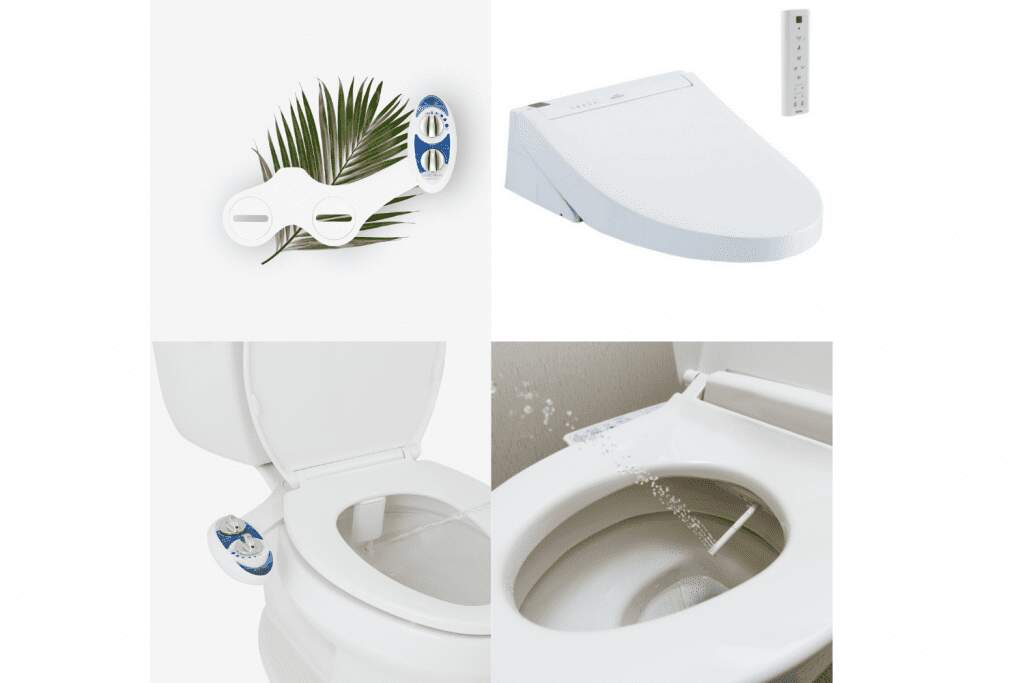
Bidet attachments sit underneath your current toilet seat, while bidet seats replace your current toilet seat. They both use nozzles to spray you that retract when not in use.
Bidet attachments are non-electric (meaning you don’t need to connect them to your mains power supply). Bidet seats can be electric or non-electric.
You control a bidet attachment via a side panel that sticks out from underneath your toilet seat. To control a non-electric bidet seat, you use a small knob or lever on the side of the seat.
You control an electric bidet seat via an attached side panel or a wireless remote control. (more on this later).
Bidet attachment vs bidet seats: installation
Both options require you to remove your toilet seat (but are generally easy to install). The layout of your bathroom is the main deciding factor in how simple the installation process is.
Coldwater-only attachments are easier to install than hot water ones.
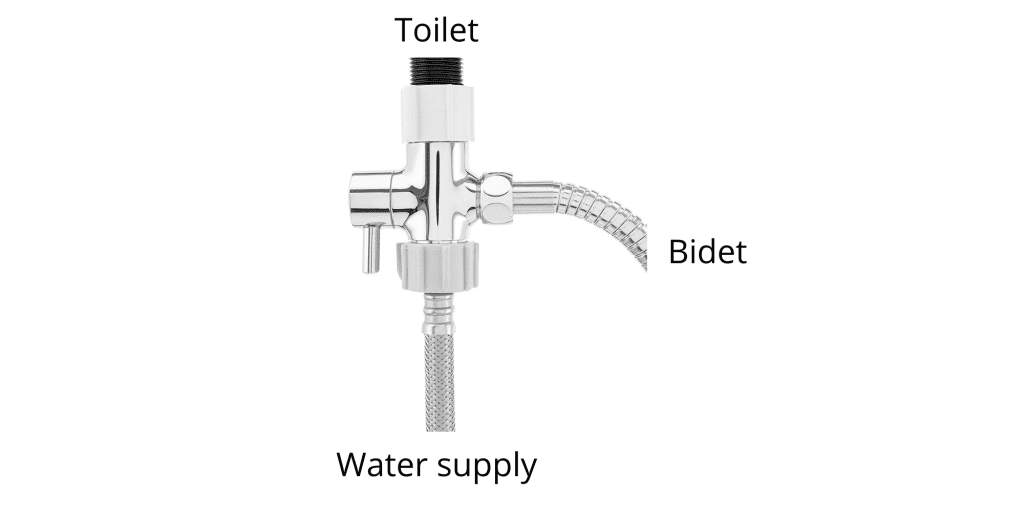
Once you’ve fitted a cold-water attachment to the seat, all you need to do is hook it up the water supply using a t-adapter. The same goes for non-electric bidet seats.
For hot water bidet attachments, you need to have a hot water line (i.e. a sink) in reach of the bidet. If the hot water line is hidden behind a cabinet, you may need to drill a hole to reach it which complicates the process a bit.
Electric bidet seats can be just as easy to install as a cold water attachment is IF you have an electrical outlet within reach of your toilet.
If you don’t, then you may need to call an electrician to install an outlet for you before you can install the seat.
Attachment vs bidet seats: features
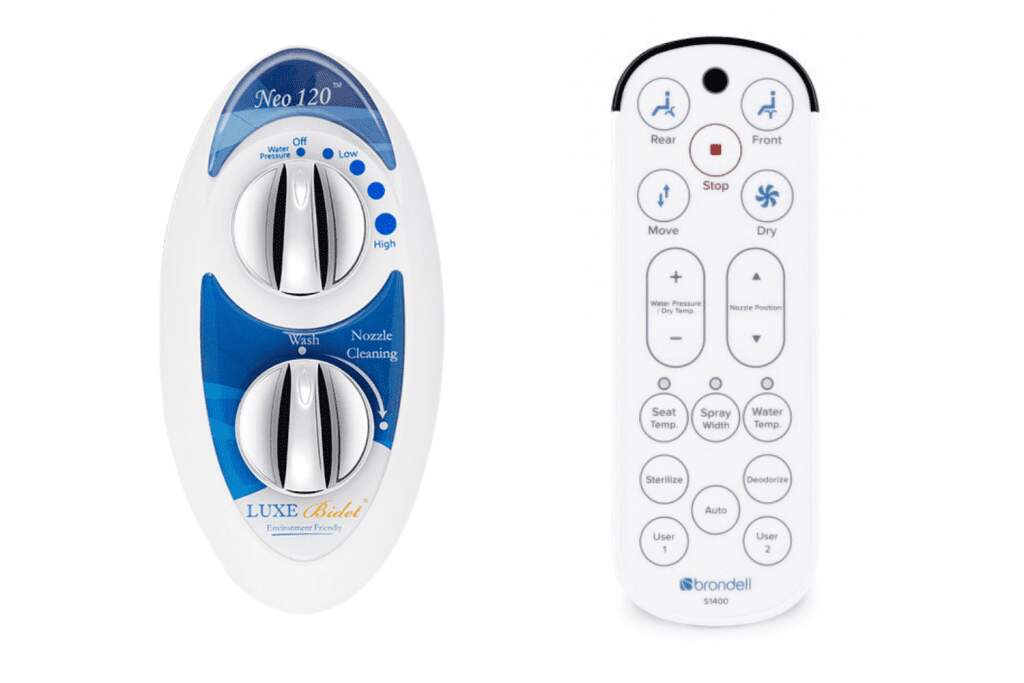
Electric bidet seats win this round hands down.
Attachments and non-electric bidet seats offer a water spray (mostly cold, with a few hot water options), adjustable pressure, and some will have self-cleaning wands.
Electric bidet seats come with a vast array of features ranging from pulsating spray modes and heated seats to automatic air deodorizers, highlights, and dryers.
Virtually every electric bidet seat will also offer instant hot water, and you can easily adjust the temperature of said water.
Some attachments and non-electric bidet seats have hot water, but since they’re connected to the main water line you have to wait several seconds for the water to heat up (or however long it normally takes for your hot tap to warm up). You also need to clear the hose of any residual cold water before the hot comes out.
If you live in a cold climate (or just hate cold water shocks) then an electric bidet is your best bet.
Attachment vs bidet seats: water pressure
Non-electric bidets and bidet attachments are powered by your house water pressure.
Electric bidets use an in-built motor to power their water spray.
The upshot of this is that attachments and non-electric seats can produce a more powerful spray than an electric bidet seat.
A motor just can’t match your house’s mains water pressure (unless you have really low water pressure). If you’re swapping from a non-electric unit to an electric unit you’ll definitely notice a drop in pressure.
BUT less pressure isn’t always a bad thing.
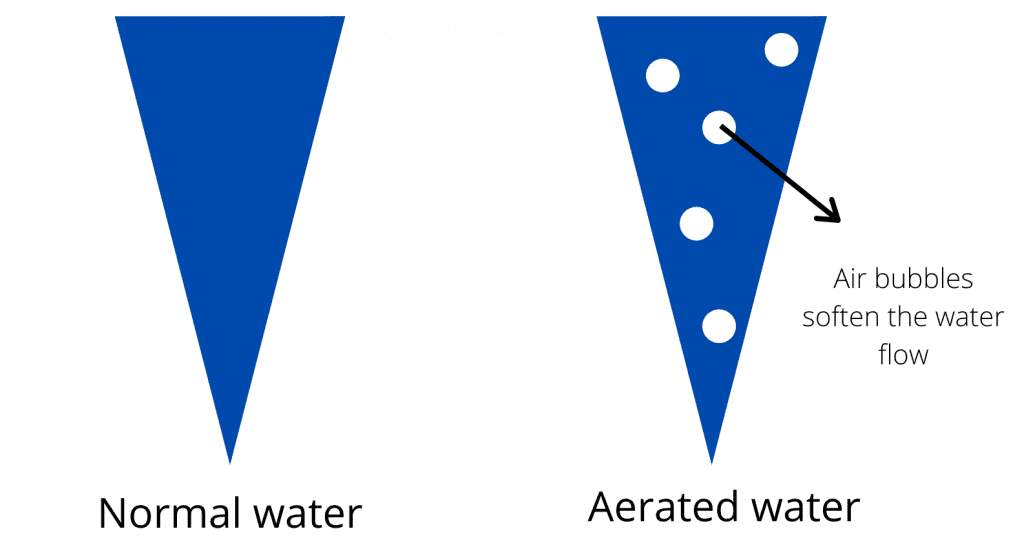
Most people never use their non-electric bidet on full power – it can hurt! And most electric bidets use what’s called aerated water. The water is infused with bubbles that soften the spray without affecting its cleansing abilities.
Attachment vs bidet seats: ease of use
Everyone wants a bidet that’s easy to use.
After all, you’ll be using it several times a day and the aim is to make going to the toilet a pleasant experience. Not a complicated one.
Operating
Operationally, bidet attachments and non-electric seats are easy to get your head around. All you need to worry about is picking the pressure.
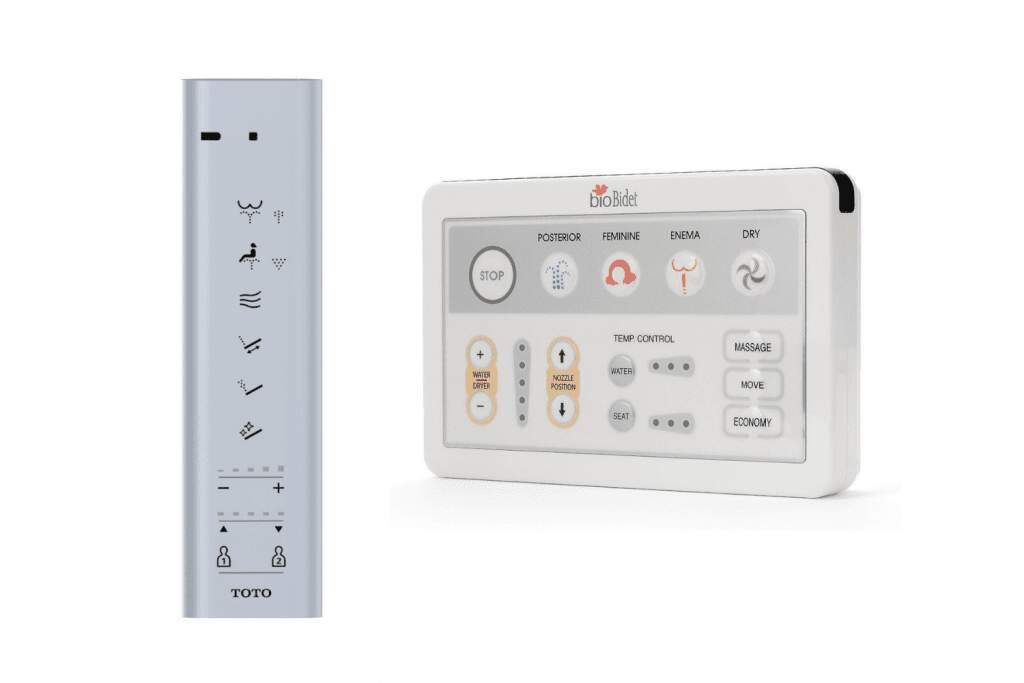
Electric bidets come with a bit more of a learning curve. There are lots of different buttons and modes to try out on an electric bidet.
It’s inevitable that you’ll press the wrong button a few times. But after a few uses, you’ll be a pro.
Mobility
One of the main advantages of an electric bidet seat is that they require no movement to operate.
You can adjust the nozzle positions to suit you, and all of the seats offer rear and front wash modes. If you have a remote control, changing the settings is as easy as scrolling on your phone. No twisting to the side to reach the buttons.
With a bidet attachment or a non-electric seat, the nozzle position can’t be changed. Some will have rear and feminine nozzles, but they’ll only have one default position. Some only have one spray wand focused on the rear, and again the position can’t be changed.
This means you’re potentially going to have to wiggle around on the seat to get into the right position. The controls are also off to the side, meaning you need to reach around and twist your head to change them.
For anyone on the larger side or with reduced mobility, a remote-controlled electric bidet is a real life-saver.
Attachment vs bidet seats: price
Bidet attachments are generally much cheaper than bidet seats.
Bidet attachments range in price from $20-$50. Bidet seats can be as cheap as $100 or as expensive as $1000.
At the cheaper end of the range, you’ll find non-electric bidet seats. At the higher end, you’ll find electric seats equipped with features fit for a king. Think automatic opening and closing lids.
Which ones best for you?
Electric bidet seats
If you want a hot water bidet, an electric bidet seat is the best choice for you. They’re also great for anyone with reduced mobility because you don’t need to move a lot to use one.
An electric bidet will add a touch of luxury to your bathroom.
Pros of electric bidet seats
- Lots of extra features
- Hot water
- Little to no movement requires
- More streamlined
Cons of electric bidet seats
- More expensive
- There’s an initial learning curve
- Require an electrical outlet
Bidet attachments
If you’re on a tight budget, you’re better off going for an attachment or a non-electric bidet seat. They do a good job and offer a high-pressure spray, but without all the bells and whistles of an electric bidet.
Pros of bidet attachments
- High water pressure
- No learning curve, simple to operate
- Cheap
Cons of bidet attachments
- Most are cold water only
- Less streamlined
- No extra features
- Harder to position yourself, more movement required
Further reading
If you’re one step closer to choosing the perfect bidet for you, don’t forget to check out these articles:
